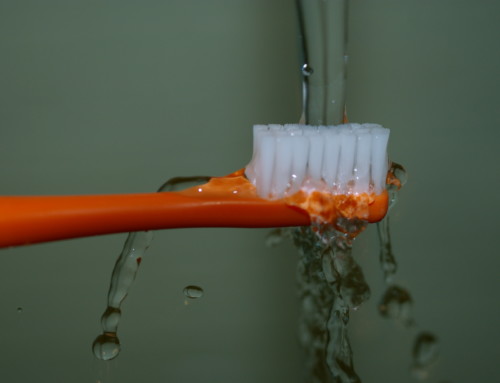I have made a list of peer-reviewed papers from this year that I’ve found. Conclusion – it is still an effective way to prevent dental caries.
Fluoridation and dental caries severity in young children treated under general anaesthesia: an analysis of treatment records in a 10-year case series.
http://europepmc.org/abstract/MED/23550501
“Children with severe dental caries had statistically significantly lower numbers of lesions if they lived in a fluoridated area. The lower treatment need in such high-risk children has important implications for publicly funded dental care.”
Water Fluoridation and the Association of Sugar-Sweetened Beverage Consumption and Dental Caries in Australian Children
http://ajph.aphapublications.org/doi/abs/10.2105/ajph.2012.300889
“Consumption of SSBs should be considered a major risk factor for dental caries. However, increased exposure to fluoridated public water helped ameliorate the association between SSB consumption and dental decay. These results reconfirm the benefits of community water fluoridation for oral health.”
High caries prevalence and risk factors among young preschool children in an urban community with water fluoridation
http://onlinelibrary.wiley.com/doi/10.1111/ipd.12023/abstract
“The high caries rate suggests that current preventive methods to reduce caries in Singapore may have reached their maximum effectiveness, and other risk factors such as child’s race, and dietary and breastfeeding habits need to be addressed.”
The economic value of Quebec’s water fluoridation program
http://link.springer.com/article/10.1007/s10389-013-0578-3
“The results showed that the drinking-water fluoridation program produced substantial savings. Public health decision-makers could develop economic arguments to support wide deployment of this population-based intervention whose efficacy and safety have been demonstrated and acknowledged.”
Water fluoridation in 40 Brazilian cities: 7 year analysis
http://www.scielo.br/scielo.php?pid=S1678-77572013000100013&script=sci_arttext
“The majority of samples from cities performing fluoridation had fluoride levels within the range that provides the best combination of risks and benefits, minimizing the risk of dental fluorosis while preventing dental caries. The conduction of studies about water distribution systems is suggested in cities with high natural fluoride concentrations in order to optimize the use of natural fluoride for fluoridation costs and avoid the risk of dental fluorosis.”
Contemporary perspective on the use of fluoride products in caries prevention
http://www.readcube.com/articles/10.1038/sj.bdj.2013.162
“Alternatively, when fluoride is provided in the drinking water or through professionally applied F-varnishes or gels, the patient will benefit without requiring daily compliance to its use. The latter methods are particularly effective as additional treatments in high caries individuals.”
Effects of Fluoridated Drinking Water on Dental Caries in Australian Adults
http://www.ada.org.au/app_cmslib/media/lib/1303/m537918_v1_nsaoh%20fluoridation%20paper.pdf
“Based on this combined body of evidence, we believe that the current findings of an inverse association between water fluoridation and caries experience provide reasonable evidence of a causal, preventive effect in Australian adults. The caries preventive effects of water fluoridation were at least as great in adults born before widespread implementation of fluoridation as after widespread implementation of fluoridation”
Seven years of external control of fluoride levels in the public water supply in Bauru, São Paulo, Brazil
http://www.scielo.br/scielo.php?pid=S1678-77572013000100092&script=sci_arttext
“The benefit of the fluoridation of public water is proportionally larger in the segments of society that do not have access to other fluoride sources such as fluoride dentifrices and which, therefore, need it the most 14 . However, fluoride levels in drinking water have to be adequate to prevent dental caries and, at the same time, not increase the risk for dental fluorosis.
In summary, the results of the present study reinforce the belief in the importance of the implementation and maintenance of external control of fluoride in water supplies to improve the consistency of water fluoridation. External control should be implemented wherever there is adjusted fluoridation, and certainly in communities where fluctuations in water fluoride levels have been revealed. This measure is fundamental to achieve the maximum benefits of water fluoridation, which contributes to improve the oral health condition of people who drink water from those supplies.”
Fluorosis and Dental Caries in Mexican Schoolchildren Residing in Areas with Different Water Fluoride Concentrations and Receiving Fluoridated Salt
http://www.karger.com/Article/Abstract/346616
“The prevalence of fluorosis was associated with the water fluoride concentration. Fluorosis at moderate and severe levels was associated with a higher prevalence of dental caries, compared with lesser degrees of fluorosis. The impact of dental fluorosis should be considered in dental public health programs.”
Effect of the widespread use of fluorides on the occurrence of hidden caries in children.
http://www.ncbi.nlm.nih.gov/pubmed/22348554
“The results do indicate that the widespread use of fluoride via public water supply and dentifrices decreases the prevalence of hidden caries.”
Malocclusion status among 15 years old adolescents in relation to fluoride concentration and area of residence
http://www.ncbi.nlm.nih.gov/pubmed/23852225
“The prevalence and severity of malocclusion was more in urban than rural areas, more among females than males, and it decreased with increasing concentration of fluoride in drinking water.”
Factors associated with surface-level caries incidence in children aged 9 to 13: the Iowa Fluoride Study
http://onlinelibrary.wiley.com/doi/10.1111/jphd.12028/abstract
“D2+F incidence on first molar occlusal surfaces in these young adolescents was associated with prior caries experience on other teeth as well as prior evidence of a D1 lesion on the occlusal surface. More frequent tooth brushing was protective of sound surfaces, and fluoride in home tap water was also protective, but significantly more so for adolescents in low-income families.”






Leave a Reply